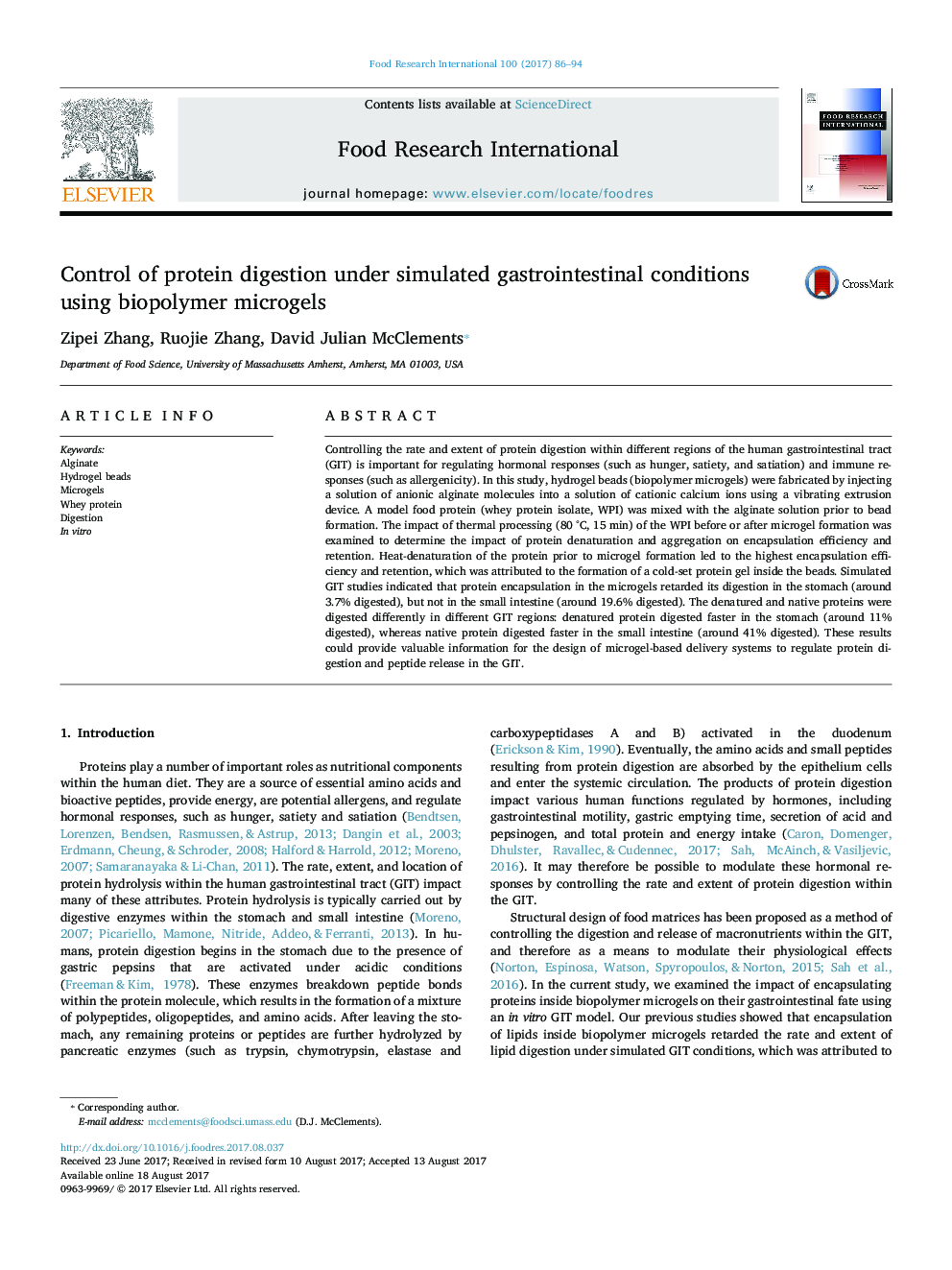| کد مقاله | کد نشریه | سال انتشار | مقاله انگلیسی | نسخه تمام متن |
|---|---|---|---|---|
| 5767830 | 1413206 | 2017 | 9 صفحه PDF | دانلود رایگان |
- Protein-loaded microgels were fabricated by encapsulation of whey protein in beads.
- Heat-denaturation led to higher encapsulation efficiency of protein in microgels.
- The denatured and native proteins showed different digestion properties.
- The microgel encapsulation retarded the digestion of protein in stomach.
Controlling the rate and extent of protein digestion within different regions of the human gastrointestinal tract (GIT) is important for regulating hormonal responses (such as hunger, satiety, and satiation) and immune responses (such as allergenicity). In this study, hydrogel beads (biopolymer microgels) were fabricated by injecting a solution of anionic alginate molecules into a solution of cationic calcium ions using a vibrating extrusion device. A model food protein (whey protein isolate, WPI) was mixed with the alginate solution prior to bead formation. The impact of thermal processing (80 °C, 15 min) of the WPI before or after microgel formation was examined to determine the impact of protein denaturation and aggregation on encapsulation efficiency and retention. Heat-denaturation of the protein prior to microgel formation led to the highest encapsulation efficiency and retention, which was attributed to the formation of a cold-set protein gel inside the beads. Simulated GIT studies indicated that protein encapsulation in the microgels retarded its digestion in the stomach (around 3.7% digested), but not in the small intestine (around 19.6% digested). The denatured and native proteins were digested differently in different GIT regions: denatured protein digested faster in the stomach (around 11% digested), whereas native protein digested faster in the small intestine (around 41% digested). These results could provide valuable information for the design of microgel-based delivery systems to regulate protein digestion and peptide release in the GIT.
Schematic diagram and confocal microscopy images of the fabrication and retention/release properties of protein microgels containing native or denatured proteins.92
Journal: Food Research International - Volume 100, Part 2, October 2017, Pages 86-94
